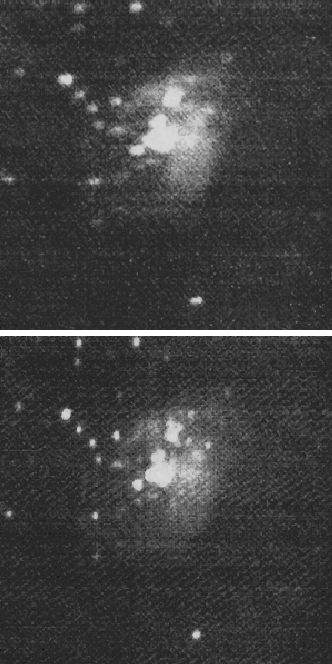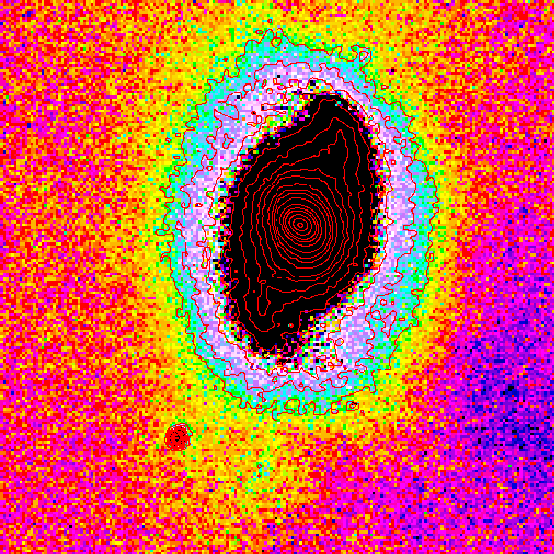Next: The Astrometric Properties of the NOAO Mosaic Imager
Up: Data Analysis Applications
Previous: Mixing IRAF and Starlink Applications - FIGARO under IRAF
Table of Contents -- Index -- PS reprint -- PDF reprint
S. J. Chan
Institute of Astronomy, University of Cambridge,
Madingley Road, Cambridge, CB3 0HA, United Kingdom
Several barred spiral galaxies and galactic HII regions associated with small molecular clouds were observed with the IR-Camera on the 1.5 m Carlos Sánchez Telescope (CST) on the Teide Observatory during October 1996. This project is one of the near-infrared observation projects of the author.
The IRCAM/IAC is based on a 256![]() 256 NICMOS 3 array and has a plate
scale of 0.4´´/pixel. Currently, the camera contains 7 filters covering
the wavelength range from 1.2
256 NICMOS 3 array and has a plate
scale of 0.4´´/pixel. Currently, the camera contains 7 filters covering
the wavelength range from 1.2 ![]() m to 2.32
m to 2.32 ![]() m.
The 3
m.
The 3 ![]() 60 seconds limiting magnitudes for point sources were
18.8 mag at J, 18.5 mag at H, and 16 mag at K.
60 seconds limiting magnitudes for point sources were
18.8 mag at J, 18.5 mag at H, and 16 mag at K.
The IRCAM/analysis package (Chan & Mampaso 1997) has been expanded into a large package for reducing and analyzing infrared data. Currently, there are 3 packages which are for reduction (IRCREDUCT), analysis (IRCPHOT) and for general usage and file handling (IRCUTIL). One of the advantages of this package is that it can easily handle the large amount of data. Furthermore, after the data were processed by tasks in IRCREDUCT, the side-effects due to problems from the CST (guiding problems for high declination objects) and from the IRCAM/IAC (the ``drip noise'' produced by the camera; see Figure 1a in Chan & Mampaso 1997)are reduced dramatically. The most important improvements are that the point spread function of stars becomes well-defined and the resolution of the images is improved (Figure 1 and Figure 2) The package is now working well. IRCUTIL and IRCREDUCT which have been released to users in the IAC, also have full help utilities.
 |
 |
S.J.Chan thanks the Institute of Astronomy, University of Cambridge for offering her financial support to attend the Conference and the hospitality of the Instituto de Astrofísica de Canarias during her stay.
Chan, S. J., & Mampaso, A. 1997, in Astronomical Data Analysis Software and Systems VI, ASP Conf. Ser., Vol. 125, eds. Gareth Hunt and H. E. Payne (San Francisco, ASP), 93
Next: The Astrometric Properties of the NOAO Mosaic Imager
Up: Data Analysis Applications
Previous: Mixing IRAF and Starlink Applications - FIGARO under IRAF
Table of Contents -- Index -- PS reprint -- PDF reprint